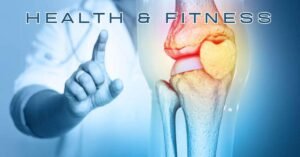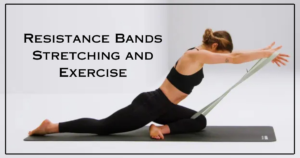The proper operation of the knees plays a vital role when people need efficient performance of daily tasks and physical actions. A hinge joint controls the knee, allowing both bending and straightening motions and limited rotational capabilities. The proper functioning of this joint faces effects from spinal curves and broken bones that eventually produce discomfort and reduced ability to move freely. The correct operation of knees depends significantly on internal tibial rotation exercises since this motion makes the tibia (shinbone) turn towards the inside compared to the femur (thighbone). The knee stabilizes better while gaining mobility as this motion protects overuse knee-joint injuries.
A dysfunction of limited internal tibial rotation leads to knee pain, possible knee instability, and various impairments of the lower body movements. Physical exercises that strengthen the internal tibial rotation will restore system functionality, resulting in improved performance output and reduced discomfort levels. The following text demonstrates the significance of internal tibial rotation by presenting functional exercises to strengthen knee movements.
Understanding internal tibial rotation exercises
The tibia is the larger lower leg bone that humans call their shinbone. The shinbone functions with the femur and the fibula to provide mobility for the knees and lower legs. The movement that causes the tibia to spin toward the inside of the body compared to the femur is known as internal tibial rotation. Successful walking, squatting, and stair climbing performance requires tibial internal rotation because this movement supports knee joint positioning and movement integration.
Correct tibial rotational motions serve a fundamental purpose in stabilizing the knee joint because they defend against unwanted stress on cartilage and ligaments. Problems developing from tibial rotation dysfunction include patella tracking issues, increased pressure on knee ligaments, knee misalignment, and potential conditions like patellofemoral pain syndrome and iliotibial band syndrome.

Focus on internal tibial rotation exercises
The internal movement of the tibia directly affects various essential movements across the body. Wearing the tibia in a correct rotational position enhances multiple body functions.
- Knee Stability: During running, jumping, and pivoting movements, knee stability reaches maximum effectiveness as the femur and tibia work as a collective unit because of correct internal tibial rotation.
- Proper Joint Alignment: When tibial rotation is accurate, the bones in the lower leg and knee joint align correctly, lowering the risk of pain and injuries.
- Efficient Gait and Movement Patterns: Whenever tibial rotation experiences enhancement, your walking and running movements and gait patterns become more efficient. Proper mechanics suffer from fewer overuse injuries and decreased joint pain because of this improvement.
- Reducing Injury Risk: Impairing tibial rotation creates abnormal stress patterns in knee joints, raising the potential for tendinitis and ligament tears. Proper rotation allows for the balanced distribution of movement forces while minimizing tissue strain that could otherwise develop.
Factors That Affect Tibial Rotation
Many elements influence the ability to carry out internal rotation of the tibia, such as:
- Weakness in the hip and thigh muscles: When the hip and thigh muscles show weakness, the stability and mobility of the hip joint decrease because these muscles contribute to internal knee rotation.
- Tight muscles: The inward rotation of the tibia faces limited movement because of tight muscles within the hip flexors, chin flexors, thigh muscles, hamstrings, and calves are involved.
- Structural imbalances or injuries: Knee function becomes compromised when structures experience misalignments or injuries or when bone structures or previous knee injuries are present.
Practical internal tibial rotation exercises
Various exercises exist to help people improve their internal tibial rotation potential for better knee function. Among the exercises exist movements that target muscles that sustain tibial rotation and promote joint flexibility around the hips and ankles. Internal tibial rotation exercises achieve their most effective results through the following list:
Hip Internal Rotation Stretch
Internal tibial rotation requires the hip rotators to function correctly and other hip muscles to perform smoothly. The range of motion in the hips improves when you stretch their internal tibial rotation exercises, subsequently enhancing how your tibials rotate.
How to perform the stretch:
- Begin by sitting floor-strengthened while stretching one leg forward at full length and keeping the other leg bent at the knee.
- Cross the bent leg in front while placing the foot flat against the ground.
- Curl the bent leg knee softly towards the floor with the assistance of your supporting hand.
- Sustain the stretch position for 20-30 seconds, doing it once to thrice during each session focused on one leg.
2. Seated Tibial Rotation
The exercise targets knee muscles while it performs internal rotation of the tibia.
How to perform the exercise:
- Position your body in a chair with your feet resting entirely on the floor.
- Position your feet hip-distance from each other and maintain a naturally bent knee at a 90-degree angle.
- You should move your right foot to its maximum position within your midline range without moving any other body part.
- Sustain the position while counting to three before returning to the initial starting position.
- Complete two to three sets of ten to fifteen leg repetitions during your exercise.
3. Hip Abduction with Internal Rotation
Both gluteus medius and minimus muscles enable knee stabilization and control of tibial rotational motions. The exercise helps strengthen the identified muscles to enhance tibial rotation and improve overall knee functionality.
How to perform the exercise:
- Position yourself on your side while keeping your bottom leg bent and extending your top leg straight.
- To perform the exercise correctly, begin by rotating your top leg at the hip joint, then lifting it up towards the ceiling without changing your feet’ downward position.
- Pause the movement for 2-3 seconds before carefully lowering the leg.
- Do three workouts with 10-12 repetitions for each lower leg.
4. Standing Tibial Rotation with Resistance Band
People can use resistance bands to enhance inner leg rotations while exercising.
How to perform the exercise:
- Position your stance by banding the middle part of your foot with resistance and placing the anchor behind you at a lower point.
- After fixing your foot in position, rotate your tibia inward without moving your leg.
- Keep the same position for 3-5 seconds, then return to the starting position.
- Repetition guidelines are to execute 2-3 sets totaling 10-12 motions per individual foot.
5. Lunge with Internal Rotation
Performing this exercise will deliver dual benefits: it will develop lower body strength and enhance mobility, combined with tibial rotation functions.
How to perform the exercise:
- You should take a lunge step while maintaining proper alignment with your front knee above your ankle joint.
- From the lunge position, internal foot rotation takes place without losing the forward direction of your hips or torso.
- Perform this move by maintaining the internal rotation position for some time before returning to the starting position.
- Each set includes two or three repetitions with a specific count of ten reps for each lower leg.
6. Squat with Internal Tibial Rotation
The movement pattern of squats enables users to develop stronger knee-related muscles while enhancing their internal tibial rotation exercises.
How to perform the exercise:
- Stand while keeping your feet at shoulder width and align your toes forward.
- While performing a squat, keep your knees lined up with your foot toes as you move your tibias toward each other’s inner edges.
- Allow your range of motion while performing this exercise, but keep your chest up with a straight back.
- Sustain the position at the bottom before rising to a standing position.
- Perform three sets of 10-12 repetitions.
7. Foam Rolling and Soft Tissue Release
A seamless tibial rotation requires completely releasing all tightness within the hip thi, thigh, and lower leg muscles. Through foam rolling, individuals gain better muscular and fascial flexibility because it helps muscles and fascia become more flexible.
How to perform foam rolling:
- The foam roller will effectively target three areas: the quadriceps, hamstrings, hip flexors, and calf muscles.
- Slower gliding movements across each space must focus first on tight areas and knots in the targeted areas.
- Perform foam rolling on each muscle group for 1-2 minutes while pulling the tension out gradually.

Conclusion
The proper alignment stability and mobility of the knee depend directly on internal tibial rotation exercises. The inability to rotate the tibia, typically with rotational dysfunction, becomes a cause of knee pain alongside instability and suboptimal movement patterns. Strategic exercises that activate the joint muscles during tibial rotation development lead to enhanced knee performance outcomes minimized injury risks, and better knee functional stabilit.
The exercise methods explained in this document deliver an all-inclusive system to enhance tibial rotation while resolving any current muscle imbalances or movement restrictions. Sequential performance of these exercises will yield prolonged knee health improvements, enhanced movement quality, and recovery from injuries. Professional healthcare advice and physical therapy evaluations must be sought whenever you experience pain while performing exercises.







